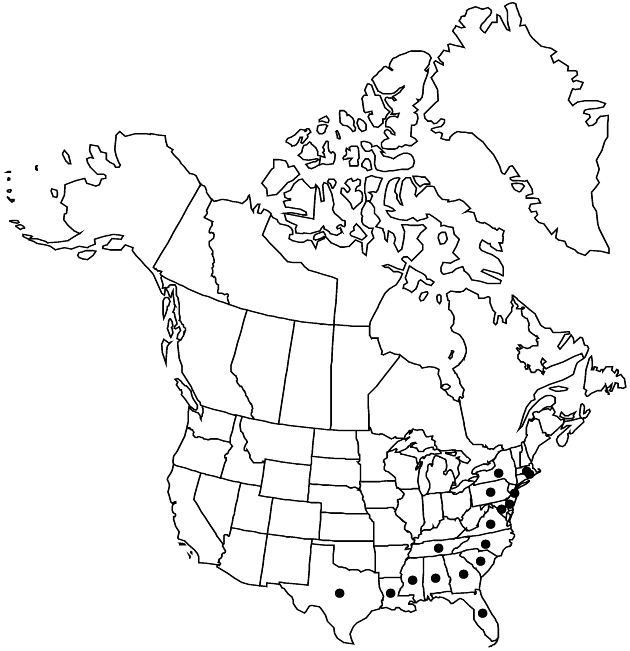Eupatorium leucolepis
Fl. N. Amer. 2: 84. 1841.
Perennials, 40–100+ cm. Stems (from short caudices or stout rhizomes) single, sparsely branched distally, puberulent throughout (more densely distally and among heads). Leaves usually opposite (distal sometimes alternate, ascending to vertical); sessile; blades pinnately nerved, lance-oblong to linear-oblong, 20–60 × 4–10(–15) mm, bases rounded to cuneate (not connate-perfoliate), margins entire or serrate, apices acute, faces villous (abaxial), scabrous (adaxial), gland-dotted. Heads in corymbiform arrays. Phyllaries 8–10 in 2–3 series, narrowly elliptic, 2.5–8 × 0.8–1.2 mm, acuminate to attenuate, mucronate, abaxial faces puberulent, gland-dotted. Florets 5; corollas 3–3.5 mm. Cypselae 2–3 mm; pappi of 30–40 bristles 4.5–5 mm.
Distribution

e North America.
Discussion
Varieties 2 (2 in the flora).
Eupatorium leucolepis is distinct morphologically by its acuminate to attenuate phyllaries, linear and usually plicate leaves, and phyllotaxy that is almost always strictly opposite to the arrays, with well-separated nodes. Eupatorium leucolepis has recently been shown to include two distinct species, an unnamed diploid that is endemic to Carolina Bay habitats and a series of relatively widespread and mostly polyploid, apomictic populations that include the type. It was recognized after preparation of this treatment that E. novae-angliae (E. leucolepis var. novae-angliae) was derived from hybridization between the unnamed diploid and E. perfoliatum, and is here recognized as a distinct species; it is not directly related genetically to E. leucolepis and thus is not appropriately classified as a variety of it.
Selected References
None.
Key
| 1 | Leaf blades strongly folded along midribs, curved, 4–10 mm wide | Eupatorium leucolepis var. leucolepis |
| 1 | Leaf blades weakly folded along midribs, not curved, 10–15 mm wide | Eupatorium leucolepis var. novaeangliae |